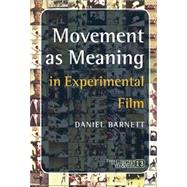
| Foreword: What this book is, what this book isn't | |
| Preface: Arriving at the scene | |
| Two pictures of a rose in the dark | |
| Modes of Perception and Modes of Expression | |
| First ideas in new media: the cinematic suspension of disbelief | p. 9 |
| Describing how the mind moves toward understandings | p. 11 |
| New paradigms for viewing experience and new ways of creating meaning | p. 12 |
| Theories of meaning: media, messages and how the mind moves | p. 12 |
| The relevance of the mechanism: lessons to carry forward from an already ancient medium | p. 13 |
| Frames vs. shots, surface vs. window | p. 16 |
| What the surface of the screen can tell us about language | p. 17 |
| Language integrates our perceptions as surely as the nervous system integrates our sense data - Hallucination or Metadata? | p. 18 |
| Letting the mind surround an idea: an introduction to Wittgenstein | p. 20 |
| Ascertaining understanding: What one language must evoke, another may stipulate (and vice versa) | p. 24 |
| Dynamic and static theories of meaning | p. 27 |
| Color, types of reference and the inveterate narrative | p. 28 |
| The polyvalence of the picture | p. 32 |
| Meaning and mutual experience - kinds of reference redefined | p. 34 |
| What has art got to do with it | p. 36 |
| A whole new way of reading - the surface of the screen and the modulation of self consciousness | p. 37 |
| The anteroom of meaning and our conception of space | p. 41 |
| Meaning and mental habits | p. 43 |
| Assumed and earned meaning | p. 44 |
| The spectrum of shared reference | p. 46 |
| The story sequence and the montage - prologue | p. 47 |
| When the editor learns about meaning | p. 48 |
| Montage and metaphor | p. 49 |
| The imitation of perception | p. 52 |
| Dynamic And Syntactic Universals | |
| Non-Verbal Universals | p. 55 |
| The polyvalence of the picture and the omnivalence of the movie | p. 58 |
| The description of omnivalence as a floating target | p. 60 |
| Dynamic universals: beginning, middle and end - a prologue | p. 62 |
| Language and the momentum of the body | p. 64 |
| Syntactic universals: interval, context and repetition | p. 66 |
| The synergy of symmetry | p. 72 |
| Sidebar - another parallel model and another speculative future | p. 73 |
| Formal references in music and cinema | p. 76 |
| The developmental leap - keeping the referent a mystery | p. 77 |
| Resemblance and resonance | p. 79 |
| The subliminal pull of the flicker | p. 81 |
| Aural and visual cadence | p. 83 |
| The frame of the experience | p. 85 |
| Resonance among frames | p. 89 |
| Ancient history - the medium as the model | p. 95 |
| Illustration, induction and repetition | p. 101 |
| The material and the medium | p. 109 |
| Sonics and seamlessness | p. 112 |
| The private language machine and the evolution of a medium | p. 114 |
| Illusions and ontological linchpins | p. 118 |
| Delimiting an audience | p. 125 |
| Summarizing the singular window en route to the panoramic view | p. 130 |
| The Moving Target | |
| Digital ubiquity - the memosphere & the mediasphere | p. 133 |
| Compression and consciousness | p. 140 |
| Indeterminacy of translation revisited and context reconsidered | p. 148 |
| The reconfigured attention span | p. 154 |
| The synergy of the mediasphere | p. 157 |
| The search engine and the editor-in-chief | p. 159 |
| A sidebar on consciousness | p. 166 |
| So, where is the screen? | p. 167 |
| Definitions and boundaries | p. 171 |
| The meaning is the metaphor (or not) | p. 173 |
| The raw and the cooked | p. 176 |
| A final reflection on method | p. 180 |
| The grain and the pixel | p. 184 |
| The Paillard Bolex Movie Camera And the J-K Optical Printer | p. 191 |
| Acknowledgements | p. 195 |
| Bibliography | p. 197 |
| Filmography | p. 201 |
| Index | p. 217 |
| Table of Contents provided by Blackwell. All Rights Reserved. |
The New copy of this book will include any supplemental materials advertised. Please check the title of the book to determine if it should include any access cards, study guides, lab manuals, CDs, etc.
The Used, Rental and eBook copies of this book are not guaranteed to include any supplemental materials. Typically, only the book itself is included. This is true even if the title states it includes any access cards, study guides, lab manuals, CDs, etc.